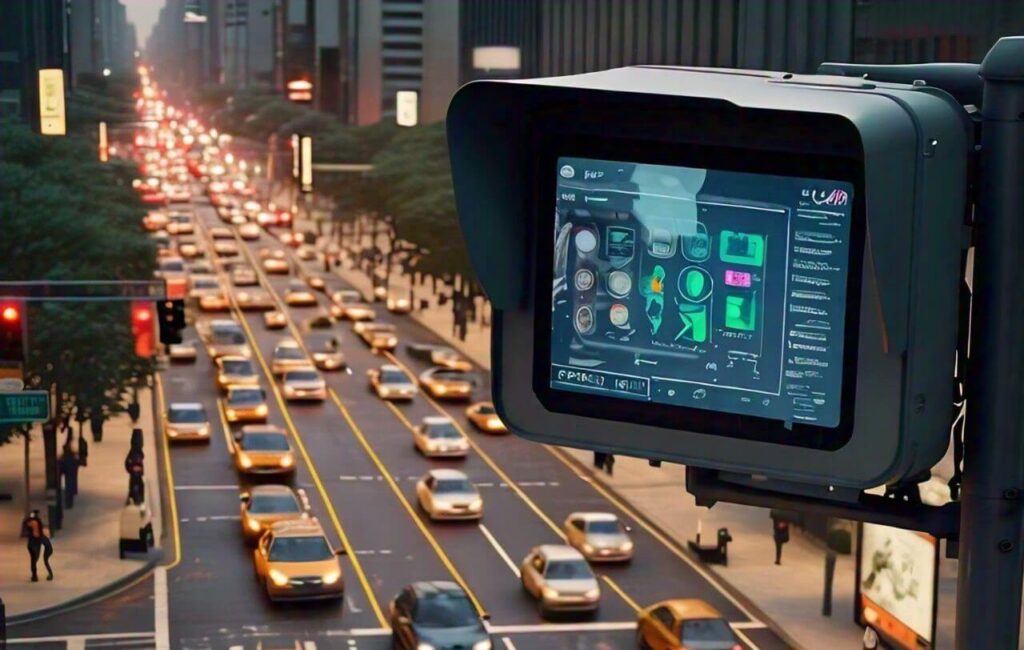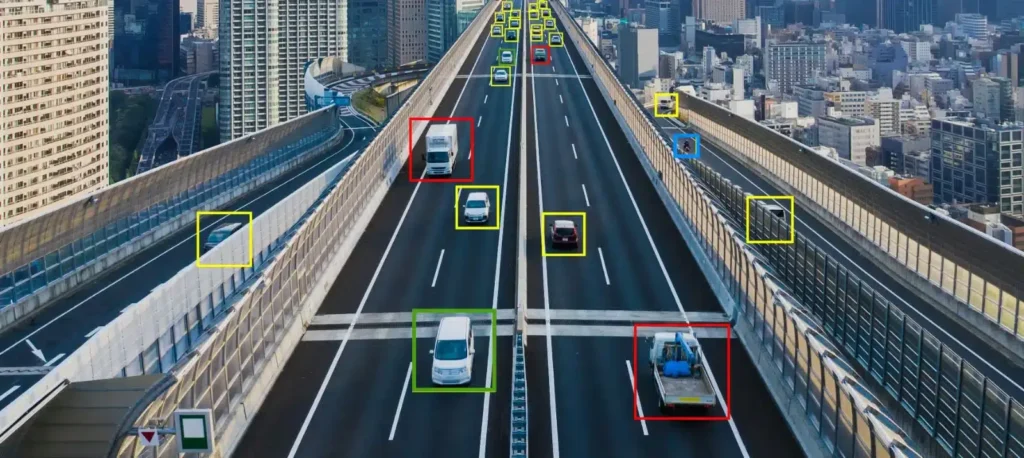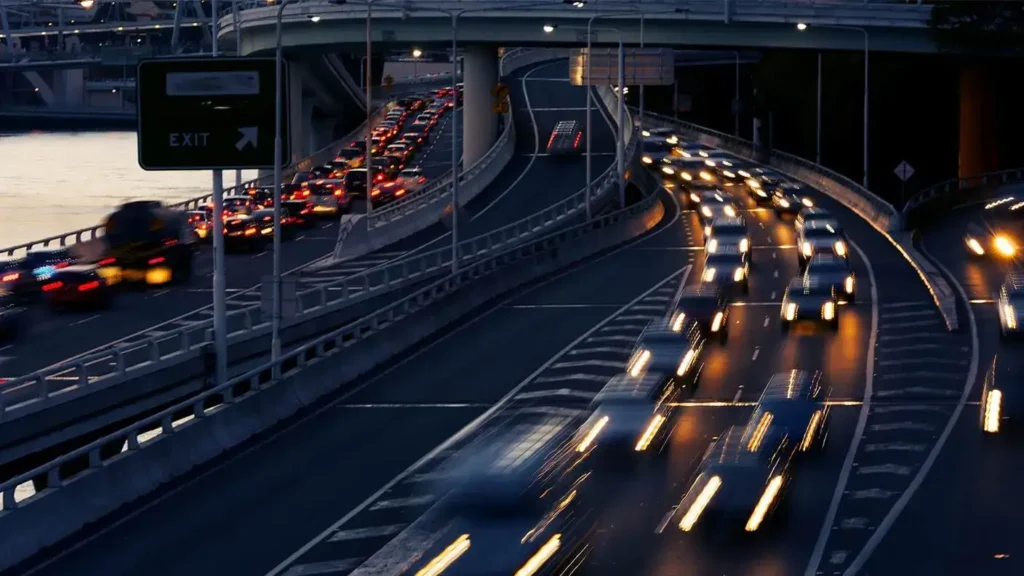Let’s be honest—nobody likes traffic. It wastes time, fuel, and patience. But what if we told you that artificial intelligence (AI) might be the key to eliminating traffic jams altogether? Not just reducing them. Eliminating them. Seriously.
With smarter cities, connected vehicles, and real-time data, AI can now analyze, predict, and manage traffic more efficiently than any human. In 2025, these systems are no longer science fiction—they’re already reshaping roads around the world.
Introduction: Why Traffic Jams Still Happen
Despite decades of road expansion and signal optimization, traffic congestion remains a stubborn issue. Why?
- Human drivers make inconsistent decisions
- Traffic signals follow outdated, fixed schedules
- Poor coordination between roads, public transport, and events
- Accidents and construction delays ripple through entire networks
AI fixes this by turning traffic into a data-driven problem, not just a civil engineering one.
What AI Understands About Traffic That Humans Don’t
AI processes millions of variables that humans can’t even observe. These include:
- Micro-delays between vehicle movement at intersections
- Chain-reaction braking patterns on highways
- Traffic ripple effects from distant road closures or events
- Real-time changes in pedestrian flow, weather, and road conditions
AI models can simulate entire city networks, adjusting traffic flow for optimal speed and safety.
Real-Time Traffic Flow Monitoring with AI
Smart cities are installing networks of cameras, sensors, and GPS trackers. AI systems use these to:
- Monitor vehicle density, speed, and spacing
- Detect anomalies like sudden slowdowns or lane blockages
- Predict bottlenecks minutes before they form
This constant stream of data allows real-time decision-making, without the delay of human intervention.
AI-Driven Traffic Signal Optimization
Instead of relying on preset timings, AI-powered signals:
- Adjust based on real-time vehicle volume
- Give priority to busy lanes or emergency vehicles
- Coordinate across multiple intersections to create “green waves”
In some cities, adaptive traffic lights have reduced intersection wait times by 30% or more.
Predictive Congestion Modeling and Prevention
AI can forecast congestion based on:
- Weather changes (e.g., rain slowing traffic)
- Scheduled events (concerts, sports games)
- Historical patterns (Friday evening rush hour)
By predicting where and when jams will form, AI systems can proactively reroute vehicles and adjust signal patterns to keep traffic moving.
Autonomous Vehicle Coordination and Platooning
When vehicles are connected and autonomous, AI can manage their movement like chess pieces:
- Maintaining safe but tight spacing to maximize road use
- Synchronizing acceleration and braking to eliminate stop-and-go
- Forming platoons that move together, reducing turbulence in traffic flow
This kind of AI-assisted coordination smooths traffic naturally, without needing to build more roads.
Smart Route Planning and Rerouting
AI-powered navigation systems like Google Maps and Waze already reroute based on traffic—but next-gen AI takes it further by:
- Predicting future traffic along your route
- Analyzing risk of delays due to construction or school zones
- Adjusting in real-time based on feedback from other vehicles
This results in fewer vehicles getting stuck in the same place, reducing the chance of jams before they form.
Integration with Public Transit Systems
AI can prioritize buses, trams, and subways within traffic systems by:
- Giving public transport vehicles green lights automatically
- Adjusting intersections to keep transit running on schedule
- Syncing rail and bus schedules with traffic patterns
This makes public transit more efficient, reducing the number of cars on the road in the first place—a huge win against congestion.
Role of V2I (Vehicle-to-Infrastructure) in Jam Prevention
Vehicle-to-infrastructure (V2I) technology allows cars to “talk” to traffic systems. AI uses this data to:
- Alert cars to change speeds to hit green lights
- Detect upcoming hazards or construction zones
- Direct autonomous cars onto the most efficient paths
With AI and V2I working together, traffic becomes fluid, adaptive, and intelligent.
Using AI to Detect and Clear Incidents Faster
Accidents, breakdowns, and debris on the road are major contributors to traffic jams. AI can reduce their impact by:
- 🚨 Instant crash detection using camera feeds and vehicle telemetry
- 🚧 Triggering detours to prevent bottlenecks
- 🚑 Guiding emergency responders using the fastest routes
The faster an incident is handled, the less likely it is to cause gridlock. AI turns what used to be a 15-minute delay into a 3-minute reroute.
Urban Planning Insights from AI Traffic Data
AI doesn’t just fix traffic in the moment—it also helps cities build smarter for the future. Using long-term traffic data, AI can:
- Identify chronically congested intersections or neighborhoods
- Recommend where to build new lanes, crosswalks, or transit hubs
- Suggest dynamic lanes that change direction based on time of day
This transforms city planning from guesswork into evidence-based, data-driven decision-making.
Environmental Impact of AI-Powered Traffic Flow
Reducing traffic jams doesn’t just save time—it also saves the planet. AI-driven traffic management results in:
- 💨 Lower emissions due to less idling and stop-and-go movement
- ⛽ Reduced fuel consumption
- 🌱 Cleaner air quality, especially in high-density urban zones
Some cities have even seen a 20–30% drop in vehicle-related emissions after deploying AI-based systems.
Challenges in AI Traffic System Deployment
Of course, rolling out AI traffic solutions isn’t as simple as flipping a switch. Common obstacles include:
- ⚠️ Data accuracy issues from faulty sensors or incomplete datasets
- 🧩 Integration with legacy infrastructure
- 🛡️ Cybersecurity concerns as more systems become connected
- 📊 Equity challenges, ensuring all neighborhoods benefit equally from upgrades
Overcoming these challenges requires thoughtful investment, cross-agency collaboration, and public transparency.
Global Examples of AI Solving Gridlock
Several cities have already proven that AI can eliminate—or drastically reduce—traffic jams:
🚦 Barcelona, Spain
- AI coordinates smart traffic lights and adjusts lane usage based on time of day
- Result: 30% faster commutes in city center
🌉 Singapore
- Uses AI for predictive congestion modeling and automated toll adjustments
- Result: One of the lowest average commute times in the world
❄️ Stockholm, Sweden
- Combines AI with weather data to reroute traffic during snow and ice
- Result: 25% reduction in accident-related slowdowns
🏙️ Tokyo, Japan
- AI coordinates rail crossings and intersections for seamless multimodal transit
- Result: Smooth, consistent flow even with high population density
These success stories prove AI isn’t just theory—it’s a real-world solution to a decades-old problem.
Conclusion
Traffic jams don’t have to be a fact of life. With artificial intelligence, we now have the tools to understand, predict, and actively prevent congestion. From smarter traffic signals to vehicle-to-infrastructure communication, AI offers a blueprint for fluid, safe, and sustainable urban movement.
The technology is already here—and it’s only getting better. The only thing standing between us and jam-free roads is adoption. So, yes, AI really can eliminate traffic jams. Seriously.


